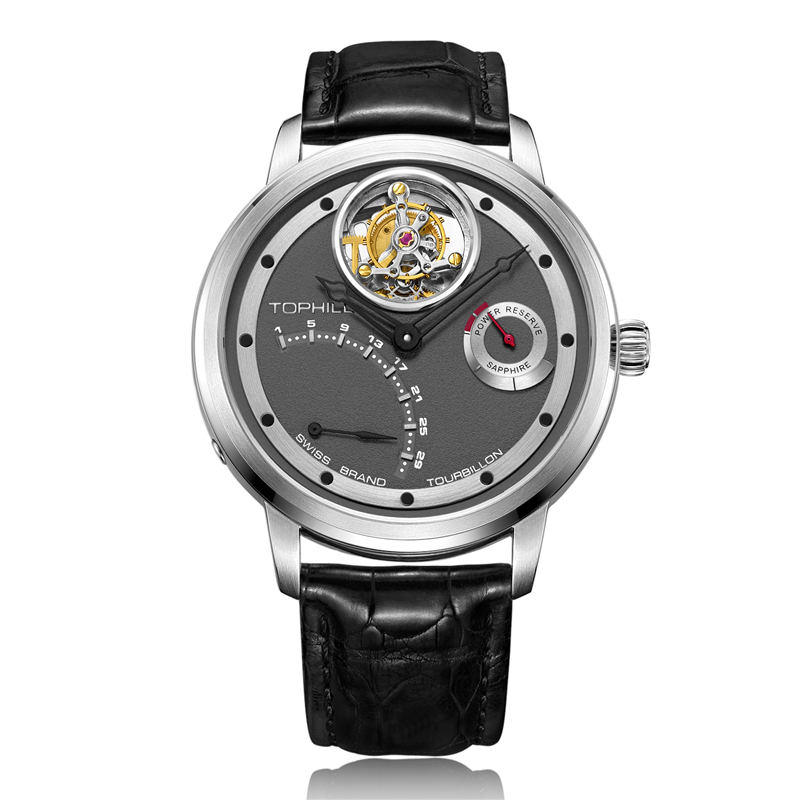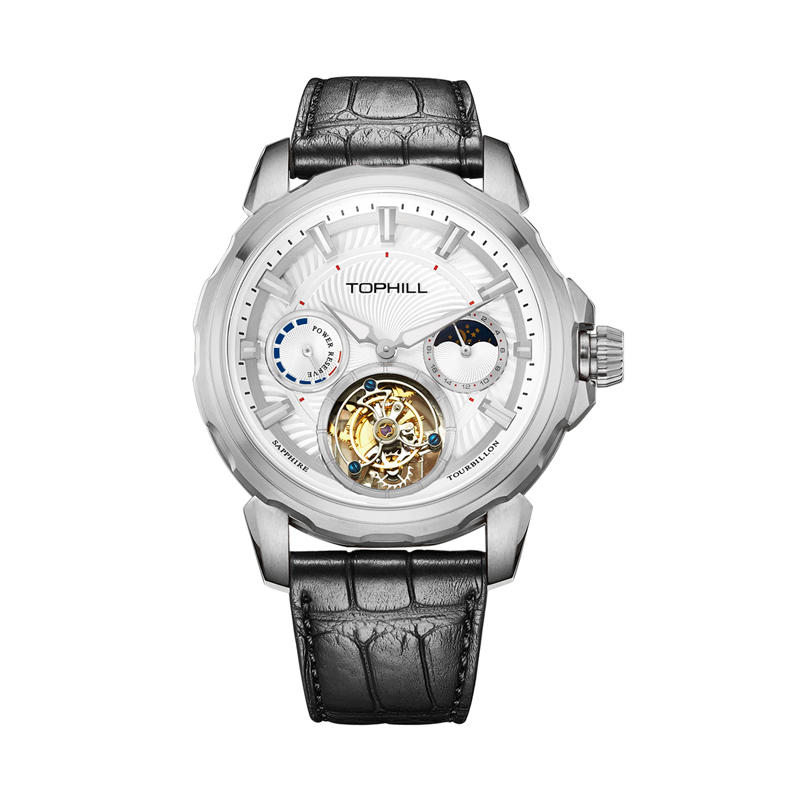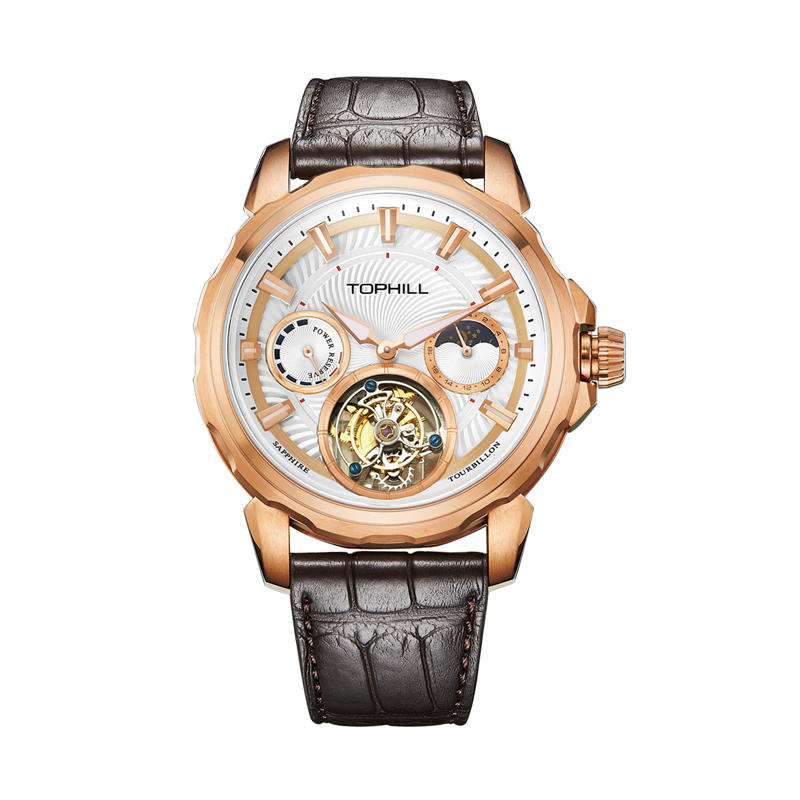When choosing a men watch, we usually pay attention to the type of the mechanism, material, manufacturer, and finally to its design, but we often forget that there is another significant component: the type of the watch crystal that protects the dial. In fact, watch crystal is exactly what influences both the cost of the watch and its impact resistance, appearance and even ease of use.
The type of watch crystal is especially important when the customers are looking for impact-resistant or waterproof watches, including those that are suitable for specific purposes like scuba diving. In this article, we will talk about the pros and cons, specifications and other characteristics of different watch crystal types.

What is the difference between different types of watch crystals?
Depending on the appearance, the watch crystal can be cylindrical, spherical, flat, made in the form of a lens and having a more complex shape. Thanks to a special adjustment, it is possible to give the lens magnifying properties - sometimes it is also used in watches to make them more convenient for people with poor eyesight.
But the most important difference is the material of the crystal. There are three widespread options: acrylic, mineral glass, and sapphire. But manufacturers are creating combined glass in an attempt to achieve the best combination of strength and flexibility. Each of these species has its advantages and disadvantages, which we will discuss below.

Acrylic
Acrylic from which the watch crystal is made is also called Plexiglas, Hesalite or organic glass. This material was created back in the 30s when the development of aviation required a perfect combination of material strength, transparency without optical distortion, lightness, flexibility, resistance to moisture and, of course, safety. Acrylic consists of a thermoplastic resin that can take any necessary shape, is difficult to break due to relative softness, is easy to polish and is inexpensive. Therefore, the main advantages of an acrylic crystal for watches are:
· low cost: watches with this type of protection are much cheaper than analogs with mineral glass or sapphire crystal;
· shock resistance: breaking the cover of such a watch is quite difficult. Due to the plastic structure, acrylic is quite durable;
· simplicity in polishing and replacing: instructions on how to polish plastic glass are available on the Internet and understandable for any person - it is not necessary to be a watchmaker to remove scratches from the surface of acrylic.
But acrylic has its drawbacks:
· plastic is easily scratched by almost any hard object;
· condensation may occur with high humidity or extreme temperature differences.
· It has also been observed that acrylic may lose transparency as time goes by.
Mineral Glass
Mineral glass is silicate glass, which is obtained by melting quartz sand, soda and calcium oxide at high temperature. The addition of other substances makes it more resilient and protected. Thanks to these properties, for a long time, mineral glass remained the best option for making dial cover and was used in all expensive models of watches.
And now the mineral glass is an excellent protective barrier from scratches and mechanical shocks, moisture, and dust. It costs more than plastic, but cheaper than sapphire, and occupies the market for the middle price segment. Currently, mineral glass is considered the most popular crystal for watches with the following advantages:
· high transparency: there are no spots or barriers;
· increased durability: scratches can appear, however, it is not so easy to occur as on acrylic. And polishing such a glass until scratches disappear is easy enough;
· higher resistance to moisture and dust than acrylic.
Despite the significantly improved performance, mineral glass can also become a little cloudy over time, especially if used in places with a polluted atmosphere. It’s easier to break than plastic but harder than sapphire. It is possible to break such glass with only a direct strong blow.
Mineral glass also glares when exposed to direct sunlight or another intense lighting, but the anti-reflective coating, which many watch manufacturers use, helps to cope with this problem.

Sapphire
Artificial sapphire, hard and brittle at the same time, which is used to produce sapphire crystals for watches, becomes more popular thanks to the heat treatment of crystallized alumina. In terms of hardness, it is not inferior to natural sapphire. This material is at the very top of the Mohs hardness scale, and only diamond is stronger than it. Sapphire generally costs more than mineral glass or acrylic. The price of sapphire is explained by the fact that expensive tools and extremely complex processes are used for its production and processing.
Watches with this type of glass belong to the luxury class and are considered the best of the best:
· it is impossible to scratch them (unless you do that with a diamond), and this is what distinguishes sapphire crystal from mineral glass;
· high transparency: even after many years, the dial remains to be visible as well as on the day of purchase;
· lack of glare: the nature of the sapphire coating is such that bright light glare does not appear on it under any lighting condition.
But can sapphire crystal be broken? Its main and only drawback: sapphire is fragile. Yes, scratching it is not so easy, but crushing it with one direct and powerful blow is very easy. Therefore, many manufacturers care about the safety of watches using a protective coating with which the watch cannot be easily damaged.
Combined glass
The most commonly seen combination is mineral glass with a thin sapphire finish (Sapflex). Thanks to the special production technology and the properties of these materials, it is almost impossible to scratch and very difficult to break, and it also has an anti-glare effect. The cost is higher than mineral glass, but significantly lower than sapphire because the sapphire layer is very thin.
Touch screen glass for smartwatches
Touch screen glass, which is used in smartphones and smartwatches, is made based on sapphire. It is equipped with special high-sensitivity electrodes that respond to the touch of heat and, as a result, of human fingers. Glasses for smartwatches can also be shockproof, but they are often covered with a protective film on top to prevent scratches that will affect not only the appearance of the watch but also the reaction of sensors and the main function of smartwatches.

